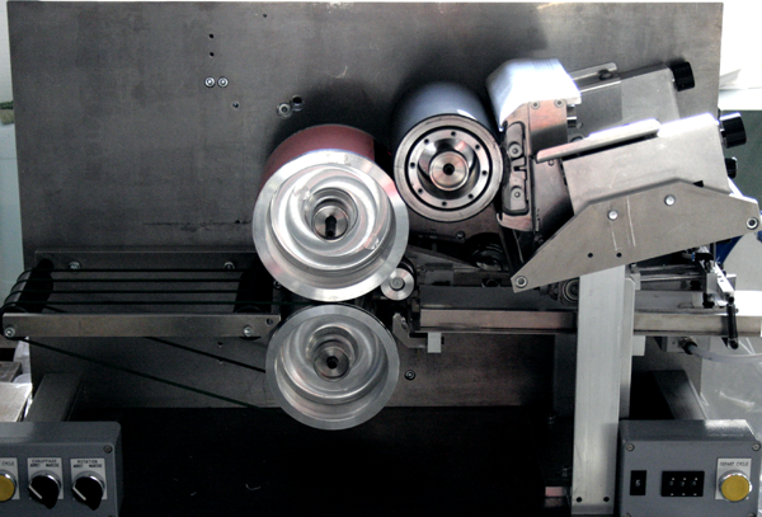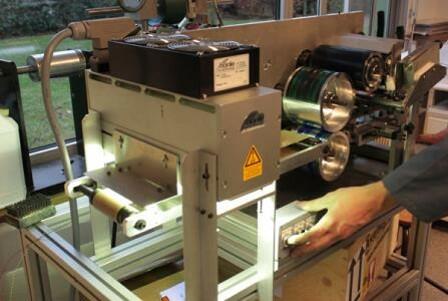
I-SpeedFlex: flexographic printing
A tool to reproduce the speed, flexibility and print quality of your industrial printing
- Reproduce industrial conditions
- Flexible to use (conventional flexographic printing, functional printing, etc.)
- Small quantities of materials
- Training for operators
The little story of the pilot
Do you need to print at laboratory scale but in industrial conditions?
With the i-SpeedFLEX, you can!
This device was developed at the CTP and unveiled in 2007 in light of the fact that, although standard laboratory devices could be used to do small prints, none of them could be used to study flexographic printing parameters.
The CTP has achieved the following objectives:
- produce a laboratory-sized device: it fits on a table top
- perform tests directly at the customer’s plant: it can be transported
- reproduce industrial conditions on reduced quantities of materials: it prints on 200 cm²
- be reproducible!
Characteristics
The i-SpeedFLEX can be used to simulate industrial presses for graphic (colour) printing, but also for printed electronics and functional printing. The limits of this pilot match those of the industrial flexographic printing process, in other words product viscosity, ink amount transferred, and drying speed.
- Speed: up to 90 m/min.
- Ink application: A wide range of engraved (anilox) cylinders of between 2.5 and 25 cm3 /m² combined with two doctor blade chambers, one dedicated to products requiring circulation and pumping and the other requiring a specified minimum product volume (125ml).
- Ink drying: adapted to suit the application. Hot air, IR or UV depending on the case. Corona treatment can also be performed.
- Print format: 90 x 200 mm, on a minimum substrate format of 105 x 297 mm
- Substrate thickness: 50 µm to 2.5 mm
First of all, the request to perform tests on this pilot is assessed by the CTP.
Then the CTP manages the tests and the related logistics:
- Creation of the printing test form and ordering of the print forms (plates), selection of plate materials depending on the product to be transferred and the printing substrate.
- Procurement of materials, substrates, ink and other products.
- Cutting to the desired format
- Selection, mixing, and rheology adjustment of products.
- Printing in sequences according to the defined protocol.
- Drying of the inks, varnishes or coating in-line in accordance with the type used.
- Checking and sampling of the printed media throughout the printing sequences.
Delivrables
- Printed and referenced samples
- Measurements and comments
- Testing report
 |
 |
|